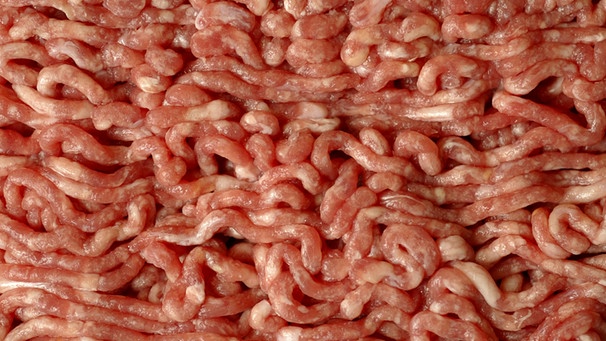Es erscheint möglich , dass durch die Desinfektion mit Chlordioxid ( 20 ppm,2 min) eine Reduzierung der Campylobacter stattfindet.
Das eröffnet eine weitere Anwendung der TwinOxide-0,3%-Solution:
http://www.ardmediathek.de/tv/Visite/Vorsicht-vor-Campylobacter-Bakterien/NDR-Fernsehen/Video?documentId=25242366&bcastId=14049224
Vorsicht vor Campylobacter-Bakterien
09.12.2014 | 05:04 Min. | Verfügbar bis 09.12.2015 | Quelle: NDR
http://www.br.de/themen/ratgeber/inhalt/gesundheit/Campylobacter100.html

Die Krankheit dauert in der Regel zwischen einem und einer Woche, selten länger. Eine Unterart des Bakteriums kann Hirnhautentzündung oder eine Entzündung der Herzinnenhaut auslösen. Dies ist aber selten.
Campylobacter kommt vor allem im Kot von Tieren, besonders von Rindern vor. Bei schlechter Melkhygiene kann er in die Milch gelangen. Eine weitere Infektionsquelle ist nicht durchgegartes Geflügel, bei dem Campylobacter zur normalen Bakterienflora gehört. Außerdem kann man sich über verkeimtes Trinkwasser, rohes Hackfleisch und Haustiere anstecken.
http://www.rki.de/DE/Content/Infekt/EpidBull/Merkblaetter/Ratgeber_Campylobacter.html
Die Herausgabe dieser Reihe durch das Robert Koch-Institut erfolgt auf der Grundlage des § 4 Infektionsschutzgesetz (IfSG). Praktisch bedeutsame Angaben zu wichtigen Infektionskrankheiten sollen aktuell und konzentriert der Orientierung dienen. Die Beiträge werden in Zusammenarbeit mit den Nationalen Referenzzentren, Konsiliarlaboratorien und weiteren Experten erarbeitet. Die Publikation erfolgt im Epidemiologischen Bulletin und im Internet (http://www.rki.de). Eine Aktualisierung erfolgt nach den Erfordernissen, aktualisierte Fassungen ersetzen die älteren.
http://www.sciencedirect.com/science/article/pii/S0168160510000437
Disinfection with chlorine dioxide has a high effectiveness in killing bacteria
http://www.rki.de/DE/Content/Infekt/EpidBull/Merkblaetter/Ratgeber_Campylobacter.html
Die Herausgabe dieser Reihe durch das Robert Koch-Institut erfolgt auf der Grundlage des § 4 Infektionsschutzgesetz (IfSG). Praktisch bedeutsame Angaben zu wichtigen Infektionskrankheiten sollen aktuell und konzentriert der Orientierung dienen. Die Beiträge werden in Zusammenarbeit mit den Nationalen Referenzzentren, Konsiliarlaboratorien und weiteren Experten erarbeitet. Die Publikation erfolgt im Epidemiologischen Bulletin und im Internet (http://www.rki.de). Eine Aktualisierung erfolgt nach den Erfordernissen, aktualisierte Fassungen ersetzen die älteren.
http://www.sciencedirect.com/science/article/pii/S0168160510000437
Survival of lactic acid and chlorine dioxide treated Campylobacter jejuni under suboptimal conditions of pH, temperature and modified atmosphere
Abstract
As mild decontamination treatments are gaining more and more interest due to increased consumer demands for fresh foods, it is of great importance to establish the influence of decontamination treatments on the subsequent bacterial behaviour under suboptimal storage conditions. For this purpose Campylobacter jejuni cells treated with lactic acid (LA, 3% lactic acid, pH 4.0, 2 min) or chlorine dioxide (ClO2, 20 ppm, 2 min) were inoculated in Bolton broth (pH 6.0) and incubated under 80% O2/20% N2, 80% CO2/20% N2, air or micro-aerophilic (10% CO2/85% N2/5% O2) atmosphere, at 4 °C during 7 days. Treatment with water served as a control. The most suppressive atmosphere for the survival of C. jejuni was O2-rich atmosphere, followed by air, micro-aerophilic and CO2-rich atmosphere. The survival of C. jejuni was dependent on the type of initial decontamination treatment, with water treated cells showing the greatest survival followed by LA and ClO2 treated cells. Intracellular pH (pHi) of individual C. jejuni cells was determined using Fluorescence Ratio Imaging Microscopy (FRIM). At all tested conditions, different subpopulation of the cells could be distinguished based on their pHi values. The pHi response was independent on the surrounding atmosphere since similar distribution of the subpopulations was observed for all tested atmospheres. However, the pHi response was dependent on the initial decontamination treatment. The investigation of intracellular parameters gave an insight into pathogen behaviour under stressful conditions at intracellular level. The results obtained in this study highlighted the importance of combining decontamination technologies with subsequent preservation techniques to the control survival and growth of foodborne pathogens.
8.2. Chlorine dioxide and other chlorine derivatives
Chlorine dioxide has been reported by various workers (cit. Genigeorgis 1999) to be more effective than chlorine in reducing levels of bacteria on carcasses and in reducing numbers of Salmonella-positive carcasses when used in water chilling. It is also less affected by organic matter and raised pH and is less unpleasant for workers or corrosive to processing machinery.
Application of chlorine dioxide to lessen bacterial
contamination during broiler defeathering


No comments:
Post a Comment